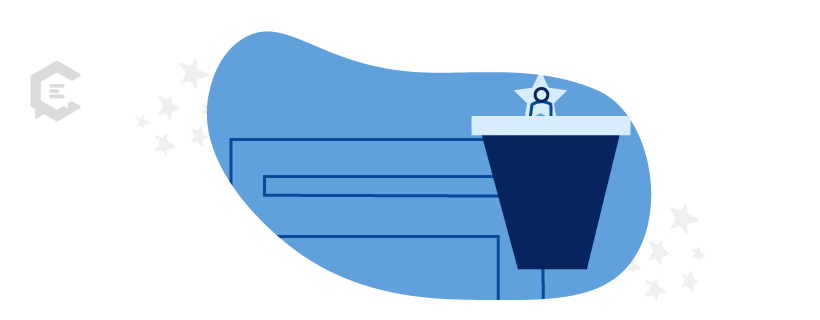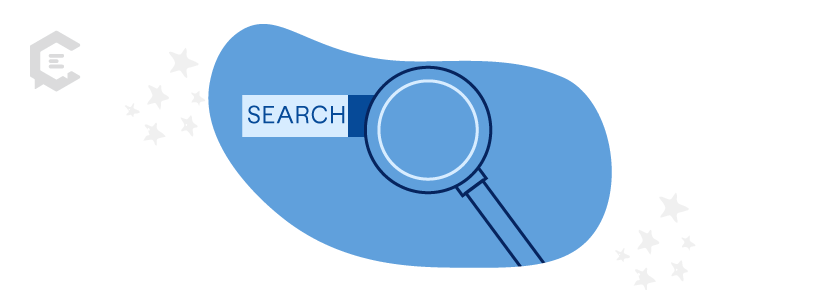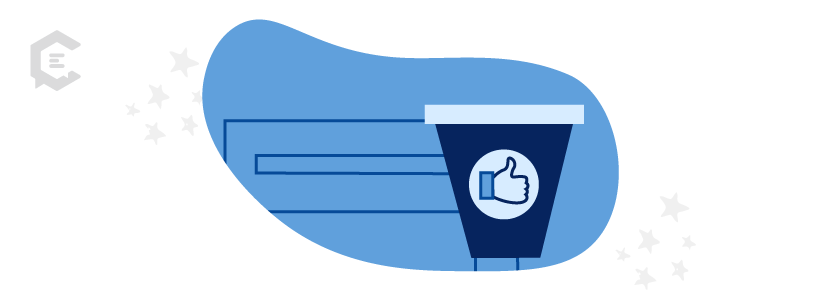What is a conversion path? A conversion path is a guided journey a potential customer takes on your website to meet your goal. This path is different for all brands and aspirations but typically involves multiple touchpoints, pop-up reminders, email notifications, and other tactics to encourage an action.
As digital marketers, our role is to help our clients meet their goals through our expertise and guidance. And sometimes, ‘guidance’ is a keyword of our work since many companies aspire to have more customers, more sales and more brand awareness.
No matter if you handle email marketing campaigns, write killer copy, develop graphics or crunch the numbers of advertisement buy-in, a conversion path must be on your radar to be successful. Here, we explore this complex marketing terminology.

How marketing leaders define a conversion path
- “A conversion path is all of the steps that a visitor to your site has to complete to reach a specific goal. There are usually many different ways to complete a goal, so analyzing conversion paths can help you identify ways to get more visitors to complete those objectives. Some of the most common conversion path goals include email opt-ins, carts, and purchases.” — Jimmy Ellis, director of performance marketing at Fracture.
- “A conversion path is a journey. Think of it as breadcrumbs because it’s showing the actual steps taken by a user of a website towards the desired end, usually marketing conversion.” —Brandee Sanders, vice president of marketing for Modal, an e-commerce platform for automotive dealerships and brands.
- “A conversion path is a set of actions an anonymous user takes to get from when their interest is piqued until a sale is closed. Oftentimes, this concept can be visualized when tracking the steps through e-commerce websites, but it largely applies across all industries. When a user first engages with a website or sales process, a successful conversion path will guide the user’s intended behavior through a series of micro-interactions, CTAs, easy purchasing options, and a reward. In the most concrete terms: a conversion path consists of a compelling offer, a call-to-action, a strongly written and designed landing page, and a thank-you confirmation.” — Payge H. Kerman, president of Wink Digital.
- “A conversion path consists of the interactions with the brand that a prospect goes through on their way to becoming a customer. While it could be as simple as going straight to the company’s website and buying on that first visit, most conversion paths are complicated, and many contain more than one step. We’ve seen customers see a display or social ad, visit the site, do a search, come back to the site, sign up for email, and finally click on an email they received from the site to convert. We’ve also seen customers with 15+ interactions prior to conversion.” — Reva Minkoff, founder and president of Digital4Startups, Inc.
- “A conversion path is the step-by-step process that a member of your target audience takes to trigger a conversion on your website. The result of completing this path is that the individual ‘converts’ to whatever action that you want them to take: a demo, an email signup, an offer, and so on.” — Christopher Tompkins, CEO and head strategist at The Go! Agency.
- “The conversion path from prospect to customer is the nurturing process by which brands entice prospects to purchase goods or services through engagement that enlightens them to the value of your brand’s product, service, or offering. This may be through a multi-channel stream of communications, targeted ads, tailored social postings, SMS, QR codes, or even more tangible products like direct mail or physical coupons distributed in stores. As with anonymous to known, if a conversion path does not conclude, we consider them to be abandoned.” — Esther Poulsen, CEO and founder of Raare Solutions.
What a conversion path is not, according to marketing leaders
Conversion paths can sometimes be confused with sales tactics, landing pages, and other promotional materials that lead to a conversion.
The critical difference is that a conversion path involves many steps, takes time, and is often very calculated and strategic from the brand, based on user activity and behavior.
Additional non-conversion path definitions to consider:
- “A funnel analysis is not a conversion path but is often confused with one. A funnel analysis defines specific events leading to a purchase that you’re tracking, but it does not show you all of the different paths customers can take to complete the funnel steps you have defined. Only by looking at conversion paths can you see what’s happening in between the different parts of your funnel.” — Jimmy Ellis, director of performance marketing at Fracture.
- “Anything that appears magically optimized for every CTA, in the same way, every time. Conversion paths will vary according to many variables, such as audience, content, timing, and CTA.” — Brandee Sanders, vice president of marketing for Modal, an e-commerce platform for automotive dealerships and brands.
- “Conversion paths are not: landing pages without an offer or landing pages without a conversion reward, a thank-you page or a discount code or an ad that leads to the main page on your website. Generally speaking, conversion paths are only considered to be conversion paths when they are designed to guide. An unsuccessful conversion path tends to be largely due to the user not having clarity on what the intended action is, or due to the undesirable nature of an offer.” — Payge H. Kerman, president of Wink Digital.
- “Word of mouth and offline advertising still count as interactions in a conversion path. A conversion path is not the same as a distribution path. It is not about how the product got from the producer to the retailer to the consumer: a conversion path is specifically about interactions that led the consumer to purchase.” — Reva Minkoff, founder and president of Digital4Startups, Inc.
- “A sales funnel is not a conversion path. Actually, a conversion path is a key element of the sales funnel. When used effectively, conversion paths can drive more sales and enhance sales conversion.” — Christopher Tompkins, the CEO and head strategist at The Go! Agency.
Common types of conversion paths
There are dozens of paths that someone can take to be converted as a customer. An ad may sway some people. Another group with previously interacted with or purchased products from the brand may click through a newsletter or email blast.
Others may search for the brand organically. Using tools like Google Analytics, you can find all of the different ways that customers have taken to get to the finish line. The following examples don’t represent all the other conversion paths, but they are some of the most common that may be identified via Google Analytics.
- Paid search
- Direct
- Organic search
- Referral
- Social network
The stages of a conversion path
Conversion paths may look different from one website to the next, but most follow the same general direction, sometimes referred to as a “website conversion funnel.” With the right design and language, you should successfully convert users through the stages, leading up to a confirmation email in the final stage.
Although each conversion path should be catered to meet a brand’s specific needs, they must include the following three steps to be successful.
- Call to action
- Landing page
- Thank you page
A more detailed conversion path requires five steps:
- Call to action
- Landing page
- Form to collect information
- Thank you page
- Thank you email
Why conversion paths matter in marketing
Simply put, brands can’t exist without customers. That means that it’s integral that brands take every opportunity to convert the people who see them on social media, their Google search, or even in their email inbox from an interested party into a paying customer. Conversion paths are the only way to make this possible.
- Conversion paths are a way to spread greater brand awareness. If a user had a seamless experience with your brand, they’d likely spread the word.
- Conversion paths are essential for any brand to grow and be profitable.
- Conversion paths tell you what’s working — and what’s not.
- Conversion paths tell you more about the customers you have, as well as the ones you hope to attract.
4 do’s of conversion paths
Conversion paths aren’t one-size-fits-all. In other words, what works for one brand may not work for yours. Even if the specifics vary from brand to brand, there are many things that every brand should keep in mind when building and/or analyzing their conversion path.
1. Do ensure your call to action grabs their attention
Think about what catches your eye when you’re scanning your inbox or newsfeed: sales, incentives, beautiful imagery, shocking statistics, a language like “cult-favorite and “everyone’s obsessed,” to name a few. The first step of your brand’s conversion path should be just as enticing.
2. Do remember that context is everything
Whether it’s in the call to action stage (a newsletter, brand email, or social media post, for example) or on your landing page, the content that you put forward needs to be relevant to the user at that very moment. The content should always reflect the appropriate stage of the buyer’s journey, and it’s up to the marketer to keep in mind the content’s end goal — Is it encouraging users to sign up for a membership, follow through with their first purchase, return for another purchase, or something else?
3. Do make sure your landing pages collect information
Oftentimes, landing pages have a form of some kind that allows users to provide the appropriate contact information for newsletters, coupons, and so forth. Make sure that the form is visible on the landing page, and give a call to action to encourage someone to take this additional step, ultimately causing them to create an account for future use.
4. Do create a seamless user experience
This may go without saying, but the conversion path must be simple from start to finish; one misstep will cause someone to “x” out. Going one step further, make sure that all of the language and imagery aligns with one another from the call to action to the thank you stage so that users become attuned to the brand’s overall look and feel.
4 don’ts of conversion paths
Many brands don’t reach their end goal because they don’t have a well-executed conversion path. Although you now know what you should do, it’s also essential to recognize the major don’ts.
1. Don’t give users too many options
First impressions are everything, so if your website landing page looks too complicated (distracting graphics or cluttered navigation bar, for example), you will likely scare away users. Keep everything simple and straightforward, especially once you reach the stage where you are collecting users’ information.
2. Don’t overwhelm users with information
Learning about something new can be extremely overwhelming, especially when you’re considering investing your time or money into it. The same feeling rings true each and every time you land on a new site. All of the language — from step one through five — should reflect where a user is at that same stage of the journey. Give them the information that is paramount to the decision they’re currently making – no more, no less.
3. Don’t ignore other starting points
Like we’ve previously mentioned, users come from all angles — organic search, email, paid search, and different touchpoints. Keeping that in mind, don’t neglect the other conversion paths just because you see success in one direction. There are still conversion opportunities to be found with courses of all kinds.
4. Don’t have tunnel vision
Sure, your brand can have its own goals, but it should always reflect its audience’s mission. In other words, listen to what your audience is telling you. If you notice that the more emotion-based newsletters are bringing traffic, keep the emotions coming. If you see that many people are clicking out of the form, take into consideration why they might be doing so. Use everything your users give you — the good, the bad, and the ugly — to build a better, more profitable brand.
4 brand examples of conversion paths
Learning by witnesses is one of the most useful education mediums. Here, we asked experts on the conversion paths that were effective and dynamic.
1. Modal popups from Ammo NYC
“We use modal pop-ups at Fracture, and any company that actively uses them will tell you they flat-out work. One of my favorite uses is from Ammonyc.com. They make car detailing products and offer a live YouTube chat with Larry Kosilla, the founder, as their modal popup offer. The rest of their site isn’t bad, but it won’t blow you away. What will, is watching Larry Kosilla turn a dusty old ‘barn find’ car into a hidden gem using his Ammo brand products. It’s mesmerizing, and I can almost guarantee that his leading indicator for new customers includes recent visitors to YouTube watching his awesome transformations. That is a solid conversion path-goal. They use a modal to get visitors on their list and into their Youtube channel.” — Jimmy Ellis, director of performance marketing at Fracture.
2. Laurie Anne Art’s video advertisement
“Laurie Anne is a Phoenix-based artist who sells courses teaching artists how to make high-quality art prints from original art. Her conversion path begins with a compelling video ad, a strong call to action and illustration of pain points, a curated, easy-to-navigate landing page, and a ‘thank you’ page that tracks the conversion value back to the advertisement click. This conversion path is one of the most successful we have seen because of its clear direction to the CTA, its highlighting of major industry drawbacks, and more.” — Payge H. Kerman, president of Wink Digital.
3. Vera Bradley’s B2C conversion path
“Knowing that their customers are often impulse buyers, but may also be price sensitive, they utilize email marketing very effectively to push prospects through the funnel. If a user adds a product to their cart but doesn’t purchase it, Vera Bradley will send an email with a discount code. If the price drops on a product a prospective customer has looked at, Vera Bradley will email them to let them know. These low marketing funnel conversion path efforts help convert a price-sensitive consumer to a sale in a targeted, intelligent, and cost-effective way.” — Reva Minkoff, founder and president of Digital4Startups Inc.
4. Fitness supplement company’s personalized tactic
“We worked with a fitness supplement company that was offering a free report conversion path where the goals had multiple tiers. So once you signed up for the free report, you were offered free nutrition analysis; you were offered a limited time discount of 30 percent when you took that. Once this was claimed, it led to a demo of the monthly app that they had created that were members only. They did their due diligence, and as a result, they knew their audience and what they wanted, and the conversions were high. Understanding what your audience wants is absolutely key.” —Christopher Tompkins, the CEO and head strategist of The Go! Agency.
Get content to support your target audience’s conversion path by talking to a content specialist at ClearVoice today.






